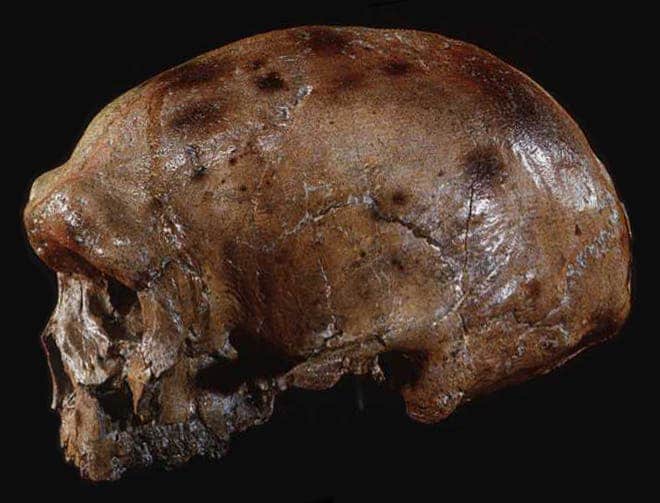
A novel method for analyzing ancient DNA has allowed scientists to peer into the distant past of the human lineage — farther than ever before. In doing so, the earliest interbreeding event between archaic human populations has been discovered, dating to 700,000 years ago.
“We’ve never known about this episode of interbreeding and we’ve never been able to estimate the size of the super-archaic population,” said Alan Rogers, lead author of the study and a professor of anthropology at the University of Utah. “We’re just shedding light on an interval on human evolutionary history that was previously completely dark.”
In 2017, Rogers published a study that found Neanderthals and Denisovans split earlier than previously thought. This caused quite the debate among scholars who came up with different results.
Something was missing — and this new study’s findings might solve the puzzle. It suggests that a previously unidentified population of ancient human populations — known as “super-archaics” — interbred with a Neanderthal-Denisovan ancestor in Eurasia about 700,000 years ago.
Rogers and colleagues analyzed the genomes of modern Africans and Europeans, specifically looking for any shared mutations between the two populations. The pattern of mutation suggests that our species has inherited genes from at least five distinct episodes of interbreeding — one of them was previously unknown.
Modern humans and Neanderthals were separated for about 750,000 years before they interbred. The new study suggests that super-archaics and the Neanderthal-Denisovan lineage were separated for well over a million years, making them the most distant pair of ancient human populations that interbred.
Using other clues etched in the modern day genomes, the researchers estimated that the super-archaic group separated into its own species about two million years, which is in agreement with fossil evidence in Eurasia dated to 1.85 million years ago.
“These findings about the timing at which interbreeding happened in the human lineage is telling something about how long it takes for reproductive isolation to evolve,” said Rogers.
These results indicate that there were at least three waves of human migration into Eurasia, the first starting two million years ago when these super-archaics started expanding out of Africa. Then, about 700,000 years ago, the Neanderthal-Denisovan ancestors migrated into Eurasia where they encountered the super-archaics, interbreeding with them. Finally, modern humans crossed into Eurasia about 50,000 years ago where they interbred with Neanderthals, Denisovans, and quite possibly other ancient human species.
“I’ve been working for the last couple of years on this different way of analyzing genetic data to find out about history,” said Rogers. “It’s just gratifying that you come up with a different way of looking at the data and you end up discovering things that people haven’t been able to see with other methods.”
Around 1.6 million years ago, the first large-brained hominin appeared on the evolutionary landscape. Known as Homo ergaster, this hominin had a more modern skeleton and employed advanced food-gathering methods. According to the fossil evidence, it was the first hominin to make it out of Africa, its remains having been found as far as Dmanisi, in the Republic of Georgia, as well as in several places in southern Europe.
Homo ergaster gave rise to Homo erectus, which quickly dominated the landscape. By 700,000 years ago, Homo erectus could be found from the river valleys in Indonesia to the open savannas in Africa. The resourceful Homo erectus had mastered fire, stone tool technology, and incorporated hunting into its daily life.
If Homo erectus wasn’t the now-extinct traveler that interbred with Neanderthal-Denisovan ancestors, then perhaps that distinction might belong to Homo antecessor, a controversial species designation based on 1.2-million- to 1.1-million-year-old fossils found in Spain. Alternatively, this may be an as of yet unidentified Homo population.
It’s remarkable when you realize that all of this insight is based on information stored in our genomes. The findings show that our lineage is far from pure. Instead, we’re the product of countless encounters with other species, as well as that of the environment. And as scientists’ abilities to interpret the genome improve, we’re bound to learn much more about what forces shaped humanity.
The findings were reported in the journal Science Advances.









